411 LOSING THE WELSH OTTER TERRIER
LOSING THE WELSH OTTER TERRIER
by David Hancock

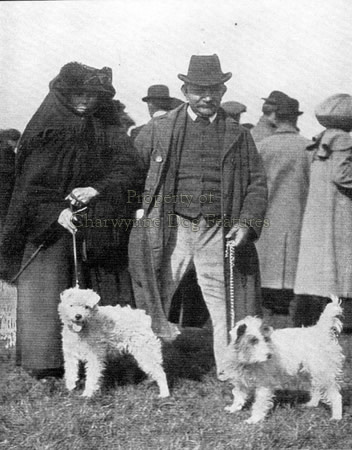 Two breeds of dog have emerged from the county of Pembrokeshire: their Welsh Corgi and their otter terrier, subsequently known as the Sealyham Terrier. Both have something in common. Both have been ruined by show ring fanciers and both are now vulnerable through sheer lack of support; they could disappear in the next fifty years. The Sealyham originated in the need for terriers to support John Edwardes's newly-formed otterhound pack in 1848, to hunt the Sealy and the Cleddau streams. Like the Rev John Russell, Edwardes (often referred to as Capt) had no intention of creating a specific breed of terrier and brought no definite breeding programme to his seeking of an otter terrier. He is known to have favoured a 14-16lb white dog, active and agile enough to operate in the local otter habitat, rather like the terriers favoured by Russell in the west of England. His early specimens too were neither short-legged nor long-muzzled. For such a serious sportsman, performance mattered way ahead of appearance. Edwardes died, heirless, in 1891, leaving no breeding records and no kennel of terriers behind him.
Two breeds of dog have emerged from the county of Pembrokeshire: their Welsh Corgi and their otter terrier, subsequently known as the Sealyham Terrier. Both have something in common. Both have been ruined by show ring fanciers and both are now vulnerable through sheer lack of support; they could disappear in the next fifty years. The Sealyham originated in the need for terriers to support John Edwardes's newly-formed otterhound pack in 1848, to hunt the Sealy and the Cleddau streams. Like the Rev John Russell, Edwardes (often referred to as Capt) had no intention of creating a specific breed of terrier and brought no definite breeding programme to his seeking of an otter terrier. He is known to have favoured a 14-16lb white dog, active and agile enough to operate in the local otter habitat, rather like the terriers favoured by Russell in the west of England. His early specimens too were neither short-legged nor long-muzzled. For such a serious sportsman, performance mattered way ahead of appearance. Edwardes died, heirless, in 1891, leaving no breeding records and no kennel of terriers behind him. 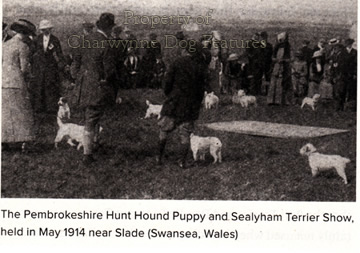

The Pembroke Hunt and local farmers kept his type going. In 1908 Freeman Lloyd tried to perpetuate the 'Pembroke Terrier' without success. In 1912, the Sealyham Terrier and Badger Digging Association was formed with the object of conserving the working instincts of the breed and to prevent it from becoming a purely ornamental show dog; it could not compete however with the power of the exhibitors. If you look at photographs of say the Pembrokeshire Hunt Hound Puppy and Sealyham Terrier show of 1914, a Sealyham Terrier show of 1914, then ones of early show dogs, from 'Duck', 'Huntsman', 'Roger Bach' and 'Scotia Stylist' you can soon see the divergence from working to show type developing. Writing on the evolution of the Sealyham in his book on the breed of 1929, Sir Jocelyn Lucas recorded: “Just before the war, one breeder at least introduced a West Highland cross to reduce the size…Show wire fox-terrier bitches were also tried in later days in order to improve coats and fronts…Fifteen or twenty years ago few litters of Sealyhams were level or true to type. Nearly every litter consisted of one or two short-legged dogs, one or two medium ones, and one at least that tried to look like an Airedale as regards shape…There was a boom in the breed. Everyone in Pembrokeshire who had a bitch put it to a local dog, and the litter went to England…One breeder at least, a few years ago, tried a cross with the Clumber Spaniel to get heads.” Against that background, is it at all surprising that even today we get heavy-boned, long-bodied, boot-box headed Sealyhams exemplifying the modern breed, to the despair of those who favour sporting terriers?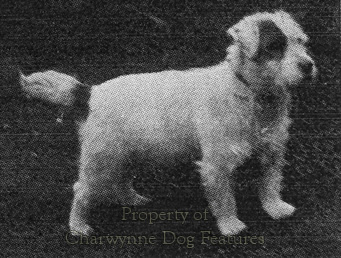
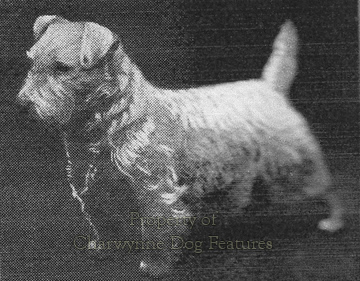
But what would an otter terrier look like? A good description of the type needed came in Richard Clapham's Foxes, Foxhounds and Fox-Hunting of 1936: "The Sealyham terriers nowadays so much advertised, are too short-legged and broad-chested to properly negotiate rock crevices or surmount ledges underground…in many situations their build prevents them doing their best work. If we were asked to give a specification of such a terrier it would be as follows: Weight 15lb to 16lb; coat, thick and wet-resisting; chest narrow, but not so much so as to impede the free action of heart and lungs, legs sufficiently long to enable the dog to travel above ground…jaw powerful but not too long…” What does the KC demand of the show Sealyham? The Breed Standard stipulates a 20lb dog, not exceeding 12in at the shoulder, long-coated and with short forelegs - exactly what an otter terrier does not need! 
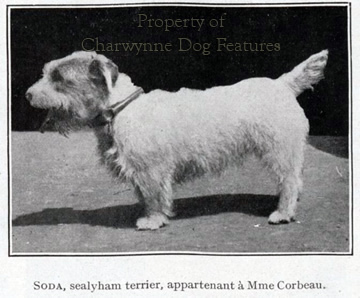
One of the best-known Sealyham breeders of the last century, Miss Frida Chenuz, has been quoted as saying that a Sealyham could really not be too low to the ground and that when judging one should look for type first and soundness second; for me that is a sure recipe for disaster in any breed, especially a sporting one. The Kennel Club’s standard for the breed demands an ideal weight for male Sealyhams of 20 lbs; for the Fox Terrier, 3 inches taller, it is only 18lbs. Yet in the early Sealyham shows there were classes for exhibits under 16 lbs. Some of Sir Jocelyn Lucas’s foundation stock weighed between 12 and 15 lbs but were top quality terriers when carrying out their declared function. The sadness of rating dogs entirely on their appearance can lead to a totally useless earth-dog bristling with ‘breed-type’ being valued more than a wholly efficient working terrier, in the same breed, that lacks breed points. Sporting terriers must always be rated for what they can do. 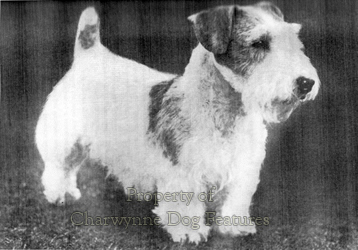

The acknowledged expert on the Sealyham in his day, Fred W Lewis, writing in Hounds and Dogs of 1932, warned of the dangers of exaggerating the breed: “The Show Sealyham is undoubtedly a very handsome, attractive animal, and when one compares the prize-winning specimens of today with those which were first benched at the Crystal Palace Show in 1910 the improvement which has been effected is truly astonishing. Many authorities argue that the craze for a powerful, and what is termed a punishing jaw has been carried to excess, and, although this is to some extent true, there is now a decided tendency amongst most judges to favour a type free from very pronounced exaggerated features. Hence breeders are striving to produce a well-balanced terrier if possible of a WEIGHT rather under than over 20lb. for dogs, and 18lb. for bitches.” But what are the needs of a working otter terrier?

The loss of the Welsh Otter Terrier then the demise of its successor, the admirable Sealyham Terrier has been sad to witness over the years. With Kennel Club registrations going from 601 in 1914 to as many as 2,617 in 1925, and from 936 in 1960 to a mere 43 in 2008, this breed has had its share of fickle fanciers. Eighty years ago, Piece O'Conor, in his Sporting Terriers, was writing: 'It is to be regretted, however, that in the past judges have too often awarded the highest honours at shows to large, heavy, clumsy-looking animals to the great detriment of the breed...The real working type should not be extravagantly short of leg, and is comparatively light in bone with rather a long body.' Expert after expert advises on size, weight and bone but the KC knows better; goodbye show Sealyham Terrier!